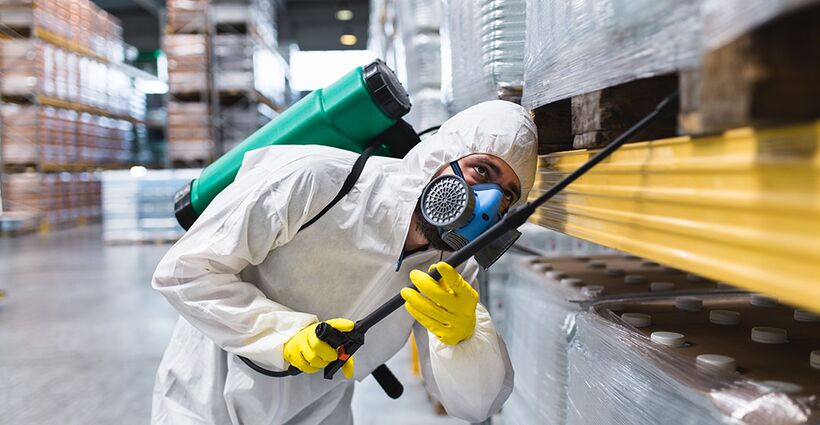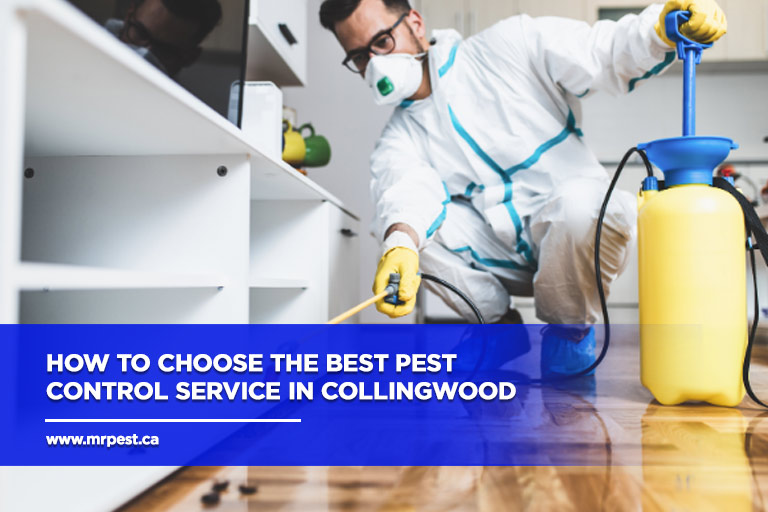Experienced Coquitlam Exterminator for Comprehensive Pest Removal
Experienced Coquitlam Exterminator for Comprehensive Pest Removal
Blog Article
Safe and Reputable Pest Control for Lasting Defense
Effective bug administration calls for a complex method that balances eco-friendly honesty with the demand for effective pest suppression. The nuances of these methods might not be promptly clear, motivating a closer exam of the techniques that can lead to lasting parasite control outcomes.
Recognizing Pest Control Approaches
Parasite control includes a selection of techniques focused on managing and getting rid of undesirable insects and rats that can intimidate both health and property. Understanding these methods is essential for efficient pest management.
The key categories of parasite control approaches consist of mechanical, biological, and chemical techniques. Mechanical methods include physical obstacles and catches to avoid parasite entry and capture undesirable species. For circumstances, using screens on home windows or employing sticky traps can considerably reduce insect populaces without presenting unsafe compounds.

Chemical pest control is commonly the most identified approach, using chemicals to eliminate pests. These chemicals can be effective however need to be made use of with care to avoid negative results on non-target species and the atmosphere.
Benefits of Eco-Friendly Solutions
Exactly how can eco-friendly options change pest control techniques? The fostering of eco-friendly insect control techniques offers various benefits, dramatically boosting the effectiveness and safety and security of pest monitoring (exterminator coquitlam). These solutions make use of natural ingredients, decreasing the reliance on dangerous chemicals that can present threats to human wellness and the atmosphere. This shift not only safeguards animals and family members however likewise lessens the capacity for soil and water contamination.

An additional advantage is the favorable influence on regional biodiversity. Environment-friendly options are developed to target certain pests while protecting helpful insects and wildlife, advertising a balanced ecological community. This approach lines up with the growing customer demand for sustainable practices, boosting the track record of insect control service providers.
Integrated Bug Management Strategies
The execution of environment-friendly options naturally results in the fostering of Integrated Bug Monitoring (IPM) strategies, which additionally improve bug control efficacy. IPM is an all natural strategy that integrates numerous tactics to manage bug populations while lessening environmental effect. This technique stresses the usage of organic, cultural, mechanical, and chemical controls, ensuring a balanced and lasting method of parasite monitoring.
One fundamental aspect of IPM is the extensive assessment of parasite activity and ecological problems. By keeping track of bug populations and identifying their life process, specialists can implement targeted treatments that interfere with the bug's habitat or lifecycle, reducing dependence on chemical pesticides. In addition, social methods such as crop rotation and environment control can dramatically reduce parasite facility and recreation.
An additional essential part is using biological control representatives, such as valuable insects or microbes, which can normally reduce pest populaces. When chemical applications are necessary, IPM prioritizes using low-risk chemicals and applies them uniquely, minimizing exposure to non-target organisms and human beings.
Including IPM strategies not only boosts bug control performance however also promotes a safer environment, lining up with the expanding need for lasting methods in insect monitoring.
Safe Practices for Homeowners
Understanding the relevance of risk-free practices in insect control can empower property owners to properly handle insect problems while protecting their wellness and the setting. Applying precautionary procedures and safe methods is crucial in minimizing direct exposure to unsafe chemicals.
House owners should first analyze their setting for problems that attract insects, such as standing food, clutter, and water waste. Regularly cleansing and securing entrance points can hinder bugs from getting into the home. Utilizing natural deterrents, such as necessary oils or diatomaceous planet, can provide reliable alternatives to chemical pesticides.
When chemical treatments are required, home owners must decide for products that are especially identified as safe for property usage. It is necessary to adhere to application standards thoroughly to prevent too much exposure. Utilizing targeted treatments in locations where pests are recognized, instead than covering spraying, can substantially minimize chemical use.
Last but not least, keeping open communication with insect control experts is essential. Property owners ought to ask about the safety of products made use of and demand green options additional reading whenever feasible. By adopting these secure practices, homeowners can develop a much healthier living environment while successfully taking care of parasite issues.

Tips for Long-Term Defense
Establishing a pest administration technique that highlights long-term defense can significantly improve the effectiveness of the safe techniques previously gone over. To achieve this, house owners ought to apply regular examinations of their residential property, concentrating on hidden locations such as attics, basements, and crawl spaces. Early detection of insect activity is vital in preventing infestations from holding.
These methods lower attractants that attract bugs into the home. Sealing entrance factors, such as cracks around windows and doors, can effectively block prospective insect accessibility.
Landscape design must also be taken into consideration; maintaining plants trimmed and keeping a distance between plants and the home reduces hiding spots for bugs. Utilizing natural deterrents, such as crucial oils or diatomaceous earth, can further discourage problems without resorting to harsh chemicals.
Finally, teaming up with an expert bug control service for regular assessments can provide an extra layer of protection. These professionals can supply customized referrals and progressed therapies, making sure that your home stays safeguarded against bugs in the lengthy term.
Conclusion
Finally, reliable and secure insect control requires a complex approach that stresses green read methods and incorporated parasite administration. By carrying out all-natural deterrents, carrying out normal inspections, and keeping proper cleanliness, residential or commercial property proprietors can substantially decrease bug populaces while securing valuable pests and the environment. Partnership with specialist insect control services enhances the efficiency of these strategies, ensuring tailored solutions that supply lasting protection and assurance versus future infestations.
Reliable pest monitoring requires a diverse technique that balances ecological stability with the need for effective bug reductions. The adoption of eco-friendly parasite control methods provides many advantages, dramatically improving the performance and safety and security of insect management.The implementation of green options naturally leads to the fostering of Integrated link Insect Management (IPM) methods, which further improve parasite control efficiency. exterminator coquitlam. By monitoring bug populaces and determining their life cycles, professionals can apply targeted interventions that disrupt the pest's environment or lifecycle, decreasing dependence on chemical pesticides.In verdict, safe and reliable insect control needs a complex technique that emphasizes environmentally friendly techniques and integrated bug administration
Report this page